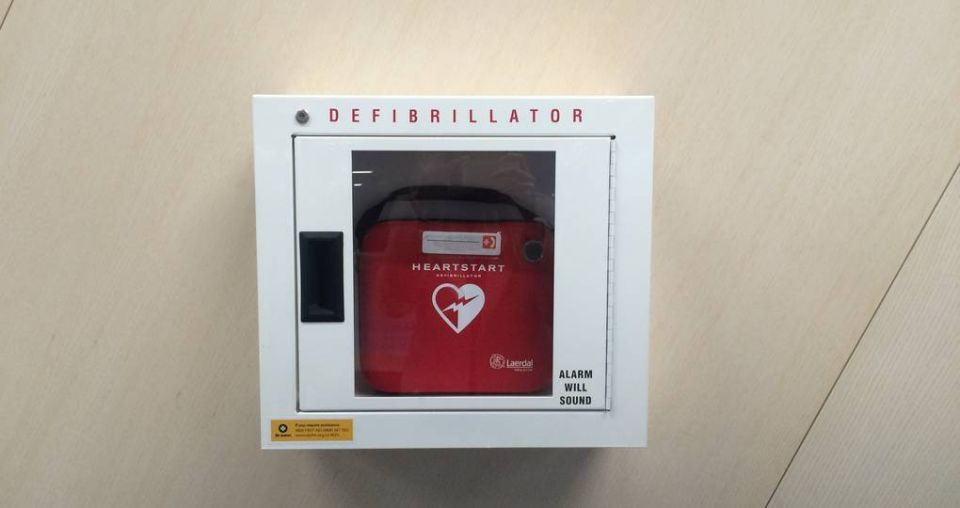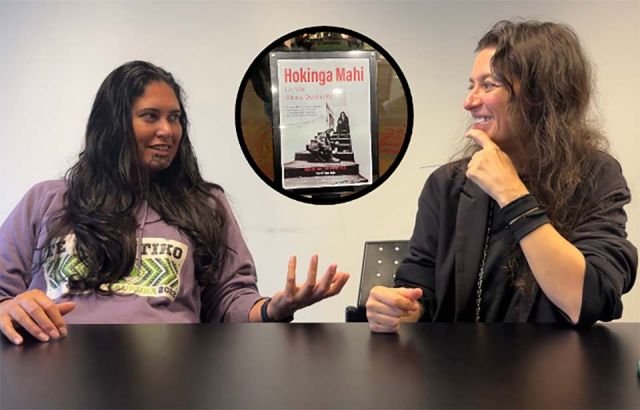The safest suburb to go into cardiac arrest
• August 12, 2016

Community defibrillators can save lives, if members of the public can find them. Photo: Jessica-Belle Greer
If you’re going to go into cardiac arrest, the best place to be is the central city.
That’s because some areas are better equipped than others when it comes to the provision of publicly available automated external defibrillators (AEDs). These life-saving devices shock a heart back into action when it has stopped.
Auckland’s CBD has the highest number, with 141 in total. The second best suburb, Henderson, has 42.
The data comes from AED Locations, a resource project that provides an interactive map of the country’s community AEDs. Gareth Jenkins, project founder, said this could be because multi-storied buildings need more than one defibrillator.
However, it can still be a hard task to have an AED near a person in cardiac arrest.
“It is a real challenge to have a defibrillator in the place where a heart attack happens, and have people know it is there and use it accordingly,” said Professor Ralph Stewart, a cardiologist at Auckland City Hospital.
The average wait time for an ambulance is nine to 10 minutes, so being able to use an AED makes a “huge difference”.
Henderson was followed by Penrose and Epsom, with 41 and 39 respectively. Mr Jenkins said this is probably because of the industrial nature of these areas.
Also high up on the list were Mount Wellington, Rosedale, Takapuna, Grafton, Remuera and Auckland Airport.
Thirty-five suburbs, including Karaka, Drury and Coatesville had only one community defibrillator each.
“It gets even more challenging in rural places,” said Professor Stewart.
Around 35 AEDs are added to AED Locations’ data set each week. Mr Jenkins said recent media attention has helped increase awareness for the need for defibrillators.
Football New Zealand development officer Geoff Brogan was brought back to life by the Western Springs Football Club’s AED in January this year, when he suffered two cardiac arrests while playing a friendly game. He hopes more of the devices will be installed in New Zealand.
“In terms of needing them in the communities, we are a bit behind the rest of the world,” he said. “Some suburbs don’t even have one.”
Mr Brogan’s club now has four AEDs, in addition to the four in Western Springs listed on the AED Locations website.
Geoff Brogan speaks about how a defibrillator brought him back to life. Video: Mandy Te and Jessica-Belle Greer
More than 2000 New Zealanders will suffer a cardiac arrest outside of hospital each year, according to St John. The use of an AED within three to five minutes can increase the chance of survival by up to 40 per cent.
Professor Stewart said AEDs are simple and safe to use, even without training. For example, if someone has only fainted, an AED will register this and not administer a shock.


‘Strong, proud and skilled' - Māori tradeswomen use social media to inspire other wāhine
Haley Doig • June 26, 2025




‘Strong, proud and skilled' - Māori tradeswomen use social media to inspire other wāhine
Haley Doig • June 26, 2025


